Sympetrum sanguineum - Ruddy Darter dragonfly
Phylum: Arthropoda - Class: Insecta - Order: Odonata - Family: Libellulidae
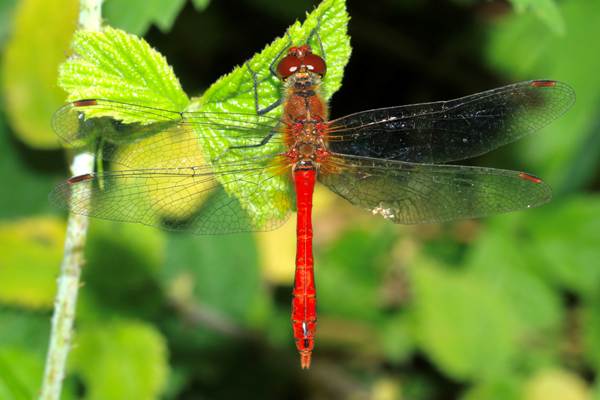
The common name Ruddy darter comes from the colour of mature males and the rapid flight habit of this lovely dragonfly species, which rarely travels far befire settling. On warm sunny days Ruddy Darters tend to bask, often with their wings depressed rather than fully outstretched, on waterside foliage, reeds or rushes, whereas on cooler days they will seek the stored warmth of bare earth, rocks or timber, including boardwalks, where they rest with wings outstretched.
Description
With an overall body length of about 3.5cm and a wingspan of some 6cm, male Ruddy Darters have bold russet-red thoraces, blood-red abdomens, entirely black legs, and brown pterostigmata. The abdomen of the male is pinched across segments 3 to 5, near to its junction with the thorax, and there are narrow black lines on the sides of the thorax.
Females, slightly smaller than the males, are more difficult to identify without close inspection. They are golden yellow and lack significant markings; however, they too have all-black legs (unlike other darter species, which have yellow lines on their legs when fully mature) and brown pterostigmata.
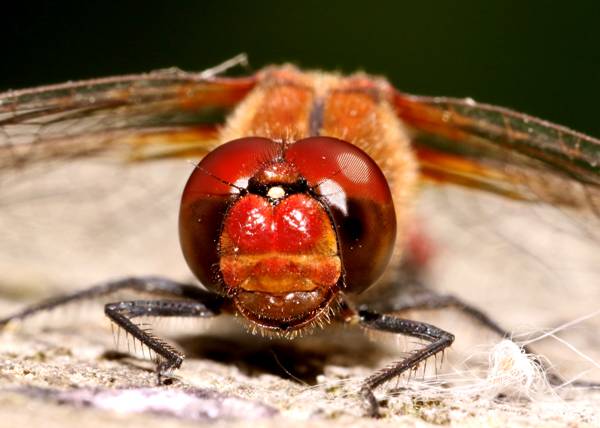
Distribution
The Ruddy Darter occurs throughout Britain and Ireland, but shortage of suitable habitat makes its distribution patchy. It is most common in southern and central England and increasingly scare further north with few records from Scotland and Northern Ireland. On the European mainland this species is plentiful throughout central and southern Europe but less common in northern regions including Scandinavia. The Ruddy Darter's geographical range also extends to North Africa, the Middle East and beyond into much of central Asia.
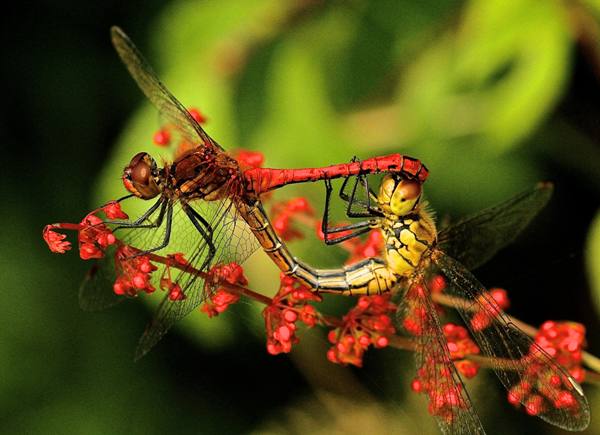
Habitat
Ruddy darters favour shallowish water with tall emergent and bankside vegetation. Breeding has been observed in well-vegetated field drainage ditches, small ponds, large shallow lakes and canals, and these dragonflies have also been seen breeding in brackish river estuaries.
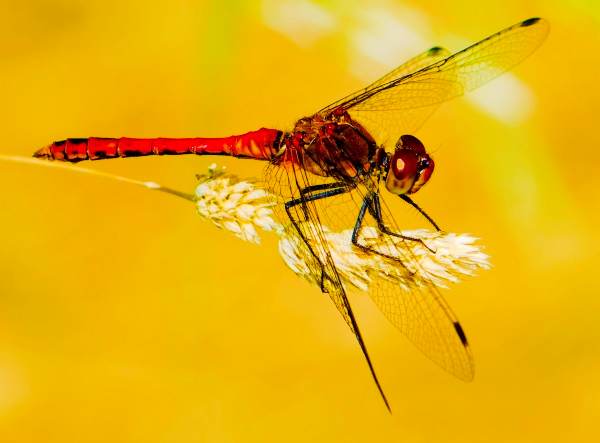
Lifecycle
In Britain the Ruddy Darter can be seen on the wing from late June until early September. These dragonflies have a one-year lifecycle. After mating, the male and female fly in tandem for the purpose of egg laying, and the female dips her abdomen in the water to release the eggs. When ready to eclode, the mature nymph crawls up an emergent reed or rush stem; the adult then emerges and unfurls its wings. Full body colour is achieved some hours after emergence.
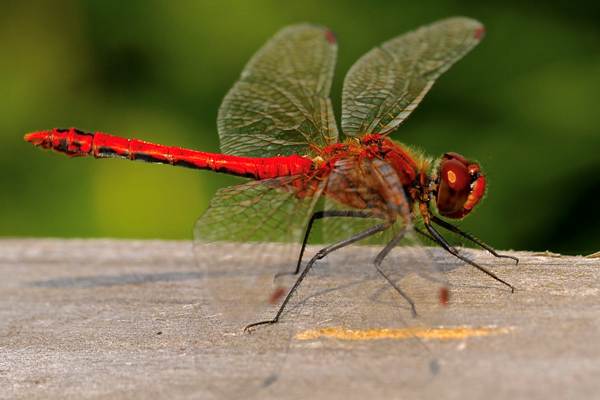
Acknowledgements
This page includes pictures kindly contributed by James Wainscoat.
Excited at the prospect of flyfishing? So are we, and we're pretty sure you would find the Winding River Mystery trilogy of action-packed thrillers gripping reading too. Dead Drift, Dead Cert, and Dead End are Pat O'Reilly's latest river-and-flyfishing based novels, and now they are available in ebook format. Full details on our website here...
Buy each book for just £4.96 on Amazon...
Please Help Us: If you have found this information interesting and useful, please consider helping to keep First Nature online by making a small donation towards the web hosting and internet costs.
Any donations over and above the essential running costs will help support the conservation work of Plantlife, the Rivers Trust and charitable botanic gardens - as do author royalties and publisher proceeds from books by Pat and Sue.
